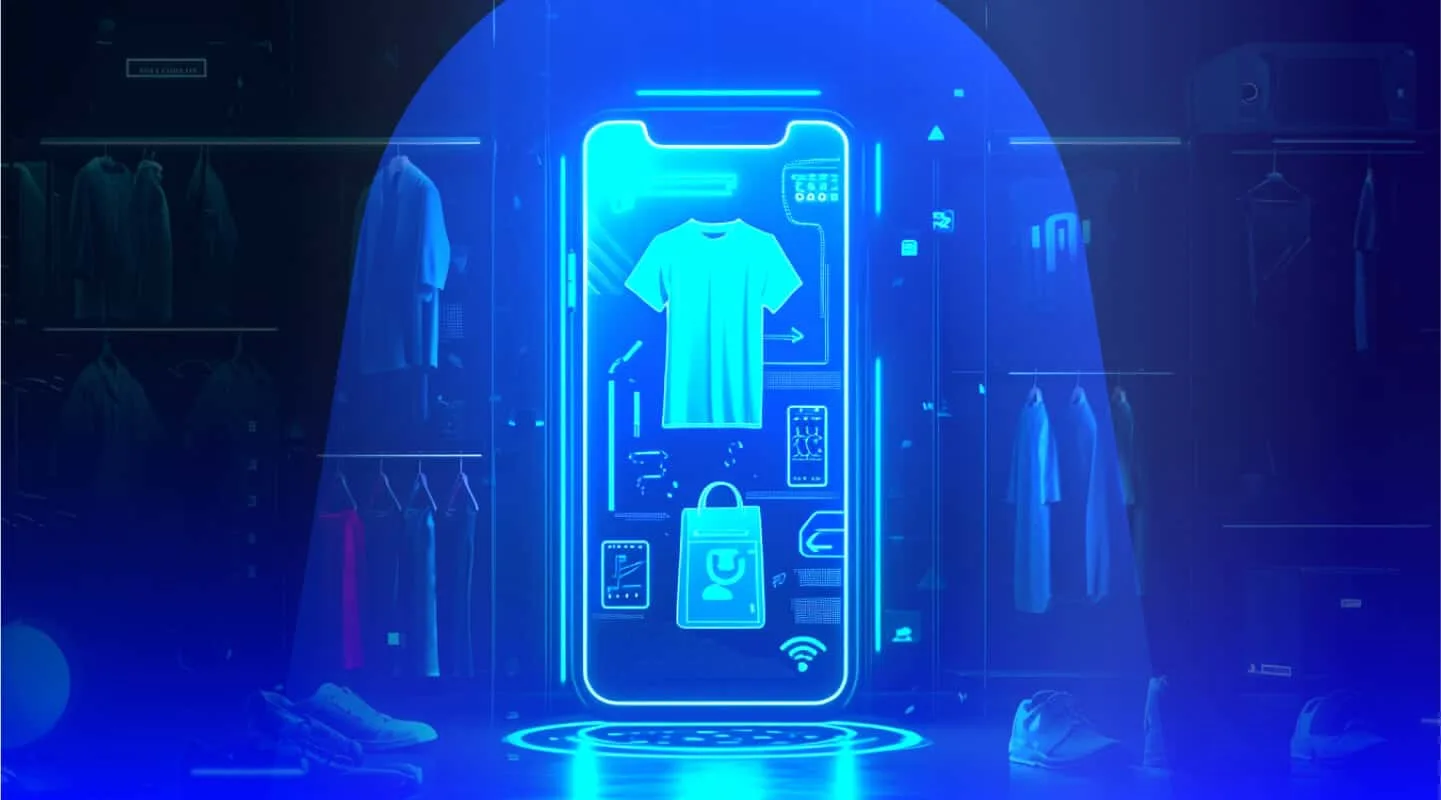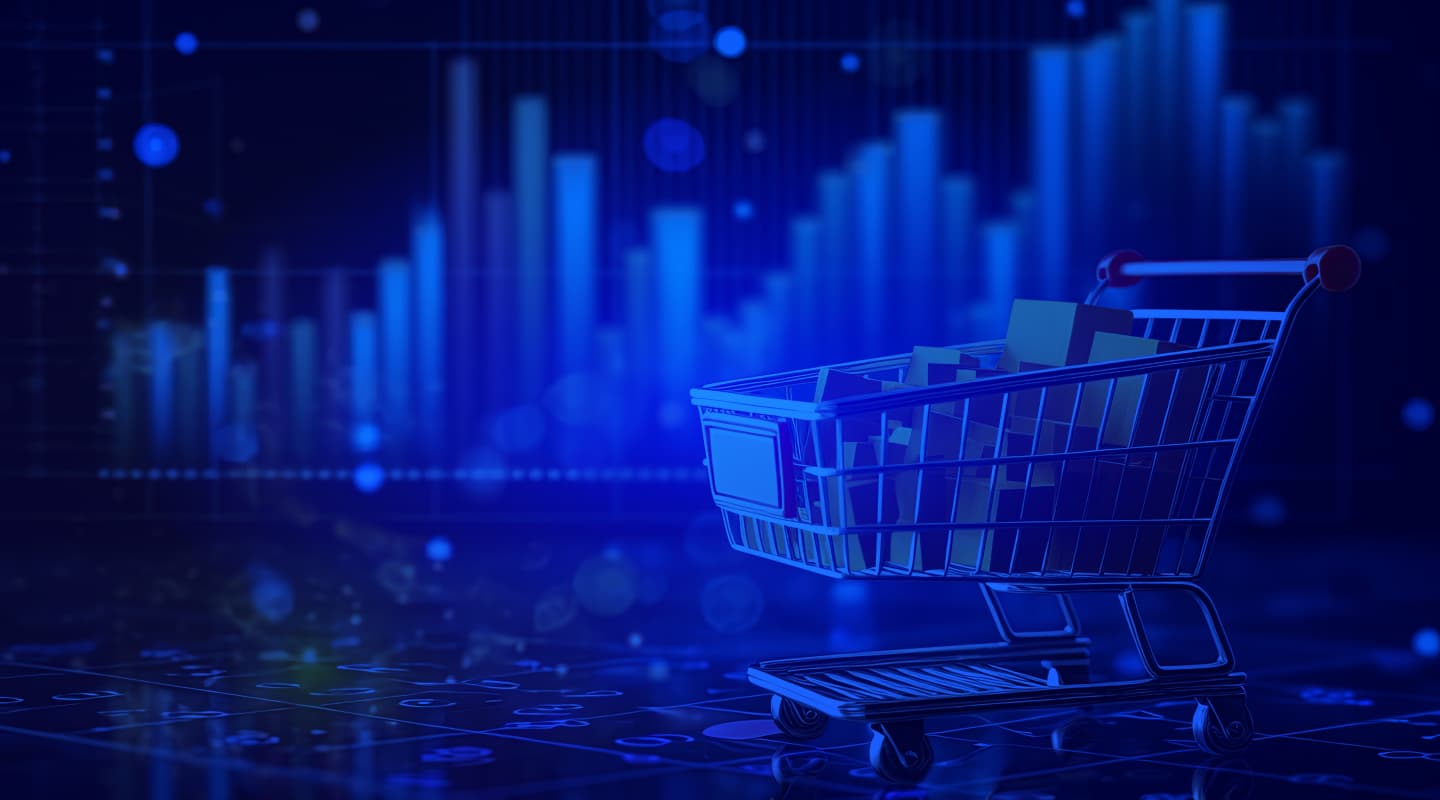Artificial intelligence is on a roll. It’s strengthening healthcare diagnostics, taking on office grunt work, helping banks combat fraud, targeting ads to individuals on social media, turning people who can’t write into literary geniuses.
You might have expected some or all of these AI use cases for this ever-evolving technology, but really? Brick-and-mortar retail? The use of AI applications for the digital transformation of physical retail stores and, as makes slightly more sense, ecommerce websites?
Yes, retail sector functionality. Even at the still viable though highly competitive physical-store level, the power of AI is impacting retail. In both retail arenas — the physical and the virtual — AI-driven tools are improving the customer experience through a growing number of applications. The numbers back up this phenomenon: the global AI-in-retail market is projected to top $24 billion by 2028 and then head above $45 billion by 2032.
Multidimensional benefits of AI
When it comes to retail, AI basically means machine learning and predictive analytics. AI technology can gather and process data, and then denote patterns and make sense of huge amounts of information.
The next AI step is facilitating sound data-based decision-making by supplying accurate forecasts and predictions. Retailers can leverage AI algorithms based on customer data such as details collected when a shopper uses the store’s app. Outcomes from utilizing this trove of information can include a better customer experience, lower expenses, and of course, higher profits.
Some of the ways AI can positively impact retail operations include:
- Facilitate shopper engagement, both in person and online
- Offer information-seeking shoppers instant help through chatbots and in-store kiosks
- Streamline inventory management
- Inform marketing campaigns
- Use generative AI to create product descriptions and marketing content
- Target marketing based on people’s purchase history and other factors
- Target promotions to prospects with the help of computer vision
- Facilitate price optimization
- Make in-store item displays more attractive and potentially lucrative through analyzing sales data
- Aid with loss prevention
- Make omnichannel, end-to-end consumer activity consistent
Let’s look at some of the striking ways AI is transforming retail inner workings and improving customer engagement, allowing companies to make smart, data-driven operating decisions and provide modern shopping features that delight their prospective buyers.
AI applications for improving retail operations
Retailers can apply AI processing to their overall operations picture and clearly see all the data they need about their customers, products, ecommerce experience, and stores. That means they can enjoy such business benefits as:
More-accurate demand forecasting
First there were paper spreadsheets, then the online equivalent. Now that AI has entered the picture, both of those methods of forecasting customer demand are fairly antiquated. With AI-aided analytics, the accuracy of demand forecasting has reached new highs. AI also helps retailers confidently make pricing decisions, order the right amount of stock (thanks to predictive analytics), and optimize product placement. As a result, shoppers can locate the items they want fast, when they need them, in the right locations.
Supply-chain optimization
According to McKinsey, “applying AI-driven forecasting to supply chain management…can reduce errors by between 20 and 50 percent—and translate into a reduction in lost sales and product unavailability of up to 65 percent.” This can then, in turn, cut warehousing costs 5–10% and administration costs 25–40%.
How does this optimizing activity look in practice?
- AI can do things like identify the fastest item-retrieval route on a warehouse floor
- Smart automation can hasten and simplify the price-markdown process to reduce excess stock levels
- When it comes to maintaining inventory levels, camera vision technology and sensors can show managers exactly what needs to be restocked
- Managers can see which products have been purchased, which returned, and where shoppers venture after leaving an item location
- Alerts can be provided when product levels are running out
The possible result of implementing these types of retail advancements? You could, of course, be looking at significantly better margins.
Catching shoplifters
Retail loss of inventory (“shrink”) from shoplifting, criminal flash-mob theft, and other nefarious activities has recently been in the news. According to the National Retail Federation, the average shrink rate in FY 2022 increased to 1.6% from 1.4% in 2021 and represented more than $112 billion in losses, so it’s not a minor issue for many retailers.
AI tools can help combat this existential threat in physical stores. One tactic, which can be employed during self-checkout, is using computer vision along with features such as digital sensors, object detection, and motion analytics to help prevent loss (in near real time). In other words, shoplifters could be snared as they’re using a secure type of scanning.
AI applications for winning customers
AI’s capacity for making shopping more enjoyable is the other half of the retail-impact picture.
Letting shoppers remotely try on items
From the shopper’s perspective, augmented reality (AR) technology is one truly cool application. Instead of taking a wild guess about whether something like a pair of jeans would fit using only one’s measurements, shoppers can see how they’d look. A few leading examples:
- Levi Strauss & Co as of spring 2023 was working on using AI to allow shoppers to see items on people’s differently sized models (who are also more diverse). Added bonus with augmented reality: fewer returns, which can certainly cut into retailers’ profits. “Online apparel returns by some estimates exceed 25%, with size and fit being the number one reason,” according to the jeans retailer.
- Walmart lets shoppers send in selfies of their figures and then try clothes on virtually to get an accurate idea of what items would look like.
- Amazon Fashion uses AR to let Snapchat users virtually try on glasses.
Letting shoppers skip the line
With consumers growing ever more technology literate, retailers must keep making sure that every element of their shopping experiences works well — almost magically — to keep up with what’s considered status quo, both now and with the next generation of AI software.
AI solutions are helping significantly in that regard. In physical stores, certain transactional processes can be automated, freeing up human associates to do higher-value activities. Even just doing away with a checkout counter, as Apple has done in its physical stores, can enhance shoppers’ enjoyment of the process as they’re looking at products and talking with associates, who can then seamlessly check them out when they’re ready.
Some companies have taken the store-streamlining experience even further. For example, the futuristic Amazon Go lets shoppers come into a store through a gate with a scanner that identifies their account through a smartphone app. They can browse and put items in their baskets as they would in a traditional store. The difference: computer vision records all the items they’ve “bought”. Then, they skip the line and simply walk out, and their account is debited.
Amazon is (not surprisingly) first in this arena, however, It’s possible that other brick-and-mortar retailers will adopt this innovative technology, too, making this type of shopping experience more commonplace.
Personalizing for (shopper) fun and (seller) profit
With AI-powered ecommerce tools, there are now more potentially lucrative opportunities for retailers to make ecommerce-store visitors even happier than they’ve recently become from the implementation of AI features.
How? With AI-aided personalization.
As they say, knowledge is power, and when it comes to AI-created personalization, this applies in spades. AI can help you determine customer intent and then tailor the person’s experience to align with that interest. If, because you’ve been collecting data as individual shoppers browse and buy on your site, you know pretty definitively what they want. Analyzing this data sets you up to accurately segment and provide online retail experiences tailored to shopping patterns and customer preferences. You can convert this customer-behavior information into, for instance, merchandising guidance that your managers can use to inform successful promotions. Or product recommendations based on someone’s recent browsing and the items they put in their virtual cart.
The better your personalized recommendations and the connection that you establish with your shoppers, the better positioned you are to win near-unanimous shopper loyalty, get shoppers and customers to stay on your site for a while longer, and take your revenue numbers higher in response.

Providing unparalleled customer service
With AI, the customer-satisfaction bar has been raised as well.
Remember the days of boutiques and department stores alike being closed after 5 pm and on Sundays? Do you recall the sight of people standing in long lines (even snaking through a store during a sale) to check out?
Contrast that with 24×7 shopping availability and being assisted by a friendly bot who knows all about what you want and is happy to chat at 3 in the morning or whenever you feel like browsing the virtual aisles of your favorite retailer. And then, when you’ve filled your cart with a bunch of good stuff, you can instantly check out and crawl into bed.
How can AI benefit your retail business?
Now you know some of the ways AI offers potentially lucrative ways to streamline retail operations and keep up with the competition. AI can benefit pretty much any retail business. How about yours? It’s just a question of which AI applications would provide the best bang for your buck and how much your revenue could conceivably increase.
Seeking the right technology partner for your retail AI implementation? We at Algolia would love to help you leverage some of the latest AI innovations with our proven state-of-the-art search. Get ready to release the potential of your brick-and-mortar store, ecommerce website, or entire omnichannel ecosystem and reach out to us today!
AI Search
The results users need to seeAI Browse
Category and collection pages built by AIAI Recommendations
Suggestions anywhere in the user journeyAdvanced Personalization
Tailored experiences drive profitabilityMerchandising Studio
Data-enhanced customer experiences, without codeAnalytics
All your insights in one dashboardUI Components
Pre-built components for custom journeys







